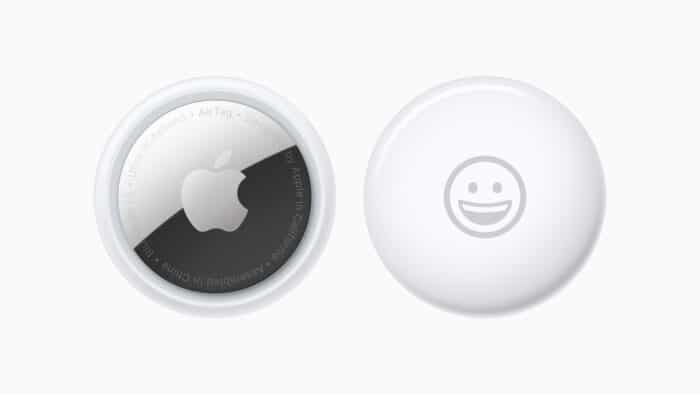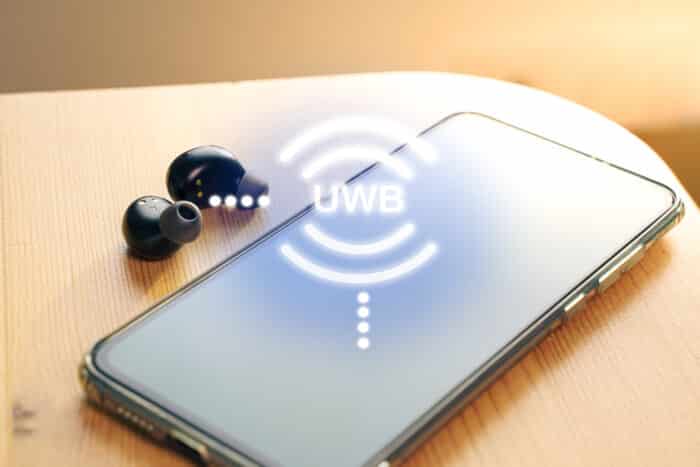In their first product launch event of 2021, Apple has released a suite of new products including the long-awaited AirTag. The sleek tracking device uses ultra-wideband (UWB), a rapidly emerging radio technology that is being increasingly utilized for IoT applications.
Whilst it was arguably one of their worst kept secrets in recent history, Apple finally unveiled the brand new AirTag at their spring event. The circular tile-like Bluetooth tracker can be attached to your personal belongings and help keep track of their location.
Location trackers are hardly new to the market, with similar products being produced by big names such as Samsung and Tile. However, Apple says the AirTag will more accurately determine the distance and direction to a lost item through an Apple-designed U1 chip that uses ultra-wideband, or UWB, technology.


How does UWB work?
Like Bluetooth and Wi-Fi, UWB is a short-range, wireless communication protocol that utilizes the power of radio waves. It operates at very high frequencies and can be used to capture highly accurate spatial and directional data.
Devices with UWB embedded send very short, low-power pulses of energy across a wide spectrum of radio waves. UWB can send up to 1 billion pulses per second – that’s 1 per nanosecond! By sending pulses in patterns, UWB can encode information and calculate locations less than two centimeters away.
In the context of the Apple AirTag, UWB will allow users to keep track of and find the items that matter most with Apple’s Find My app.
“With its design, unparalleled finding experience, and built-in privacy and security features, AirTag will provide customers with another way to leverage the power of the Apple ecosystem and enhance the versatility of iPhone,” said Kaiann Drance, Apple’s vice president of Worldwide iPhone Product Marketing.
Where is UWB currently used?
With the opportunity to position accurately and securely, UWB technology is one of the vital stepping stones towards the Internet of Things (IoT). The ability to sense such precise locations will advance the capabilities of smart technologies, allowing them to anticipate and react to actions more instantly.
UWB made its first smartphone appearance in the Apple iPhone back in 2019 however it is being applied to a variety of small-scale and complex environments and processes. From digitizing warehouse floors to providing live distance warnings for individuals in the time of COVID-19, UWB can seamlessly be integrated into industry, entertainment, sport, medicine, and our homes.

One of the most prevalent current applications of UWB is in cars. UWB-equipped cars allow vehicles to know exactly where their users are, allowing for increased security and convenience.
In January of this year, BMW announced the Digital Key Plus with UWB technology. The integration will allow BMW iX owners with iPhones to securely unlock and start their car without taking their phone out of their bag or pocket.
IoT and the Future with UWB
As we move towards an IoT society, we will see UWB increasingly integrated into our daily technological routines. UWB will ease the transition to more complex technologies as it removes the need for human interference or control mechanisms to be learned.
Imagine this: After leaving work for the day, your car automatically recognizes your phone and unlocks the doors for you. After getting home, the car recognizes that you have left the vehicle and locks the doors again. As you head towards your front door, your home recognizes that you are returning and illuminates your walkway as you approach.
UWB is bringing us closer to the idea of personal presence in IoT and the smart home that we are so quickly embracing. Whilst its uses are currently limited, UWB will only continue to mature and spreads to more devices. It is predicted to do for close distances what GPS did for long distances, unlocking a new age of location-aware technology applications and opportunities.
References
Apple, 2021. Apple introduces AirTag. [online] Available at: <https://www.apple.com/newsroom/2021/04/apple-introduces-airtag/> [Accessed 21 April 2021].


